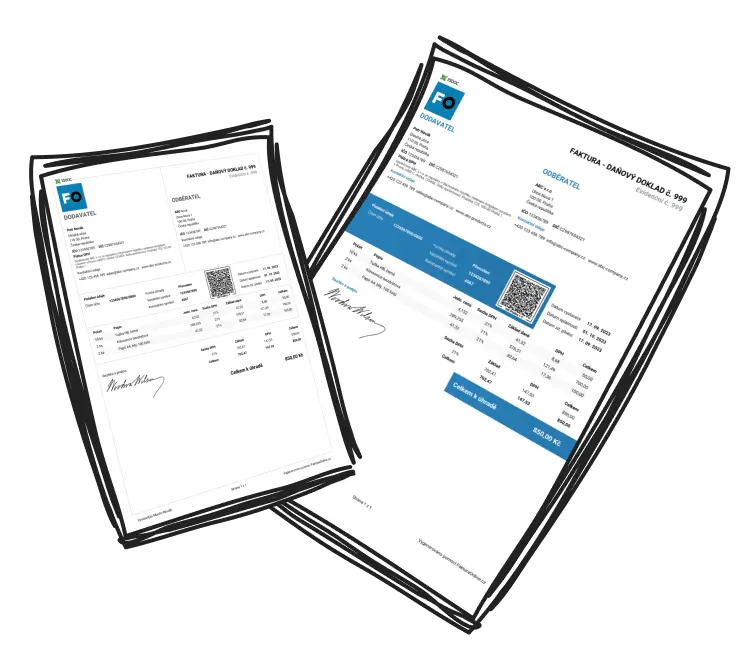What is an Invoice vs Receipt?
Many people confuse these financial documents when considering invoice vs receipt differences, but they serve distinct purposes.
An invoice is a request for payment issued by a seller to a buyer. It lists out the goods or services provided, their prices, total payable amount, and payment terms. It serves as a formal way to notify a customer about what they owe and when payment is due.
A receipt, on the other hand, is proof of payment. It is issued after the buyer pays for goods or services and confirms that the transaction is complete. Receipts include details such as the total amount paid, payment method, and date of the transaction.
Key Distinctions
Invoice |
Receipt |
|---|---|
Request for payment |
Confirmation of payment |
Issued before payment |
Issued after payment |
Includes payment terms |
Includes payment details |
Both documents complement each other and ensure clear communication in transactions.
How is an Invoice Different from a Receipt?
Understanding the distinctions in an invoice vs receipt comparison is key to knowing their roles:
-
Timing of Issue:
Invoice: Sent before payment to request money.
Receipt: Given after payment is made.
-
Purpose:
Invoice: Outlines what the buyer owes.
Receipt: Confirms payment completion.
-
Details Included:
Invoice: Includes items purchased, payment terms, and total due.
Receipt: Includes total paid, payment method, and transaction date.
-
Issuer and Recipient:
Invoice: Issued by the seller to the buyer.
Receipt: Issued by the seller to confirm the customer’s payment.
Transaction Timeline
Invoice comes first. Receipt comes last. An invoice starts the transaction as a billing document, while a receipt ends it by confirming payment.
When Should You Use an Invoice vs Receipt?
When to Use an Invoice
Use an invoice whenever you need to bill a customer for goods or services, especially when payment is not made immediately. For instance:
Freelancers or service providers issuing bills after completing projects.
Businesses offering credit terms or installment payments.
When to Use a Receipt
After receiving a payment, in scenarios comparing invoice vs receipt usage, issue a receipt to confirm the transaction. Examples include:
Providing receipts at stores after a purchase.
Issuing a receipt for completed online payments to acknowledge them.

Tip
Always follow this sequence: Invoice first. Receipt after payment. Never substitute one for the other, as this can confuse both sellers and buyers.
What Details Are Included in an Invoice vs Receipt?
Components of an Invoice
Seller's logo and business name.
Buyer’s contact details.
Invoice number for tracking.
Date of issuance.
Itemized list of goods/services with descriptions and prices.
Total amount due, including taxes or discounts.
Payment terms and due date.
Available payment options (e.g., bank transfer, credit card).
Components of a Receipt
Seller’s name and business information.
Receipt number for tracking.
Date of payment.
List of goods/services purchased.
Amount paid for each item.
Total amount paid.
Payment method (e.g., cash, credit, check).
Statement confirming payment completion.

Warning
Leaving out critical details like payment terms on an invoice or transaction confirmation on a receipt can lead to disputes, delayed payments, or legal issues.
Why Is It Important to Know the Difference Between an Invoice and a Receipt?
Recognizing the differences in an invoice vs receipt context is crucial for financial management, clear communication, and smooth transactions. For businesses, issuing an invoice ensures proper billing, while receipts confirm settled payments, aiding in accurate bookkeeping. These documents also play significant roles in regulatory compliance and tax reporting.
For customers, distinguishing between invoices and receipts prevents confusion about what is owed versus what has been paid. Mismanagement can lead to disputes, late payments, or poor financial records.

Example
Imagine mistaking one document for the other in an invoice vs receipt scenario during a tax audit—this can result in penalties or fines for incomplete records. Properly using and differentiating these documents saves time and preserves trust in business relationships.

